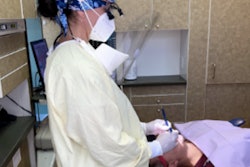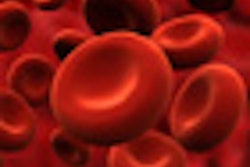
Forgetfulness, negligence, working alone, and failure to use personal protective equipment are some of the reasons behind occupational exposures to infectious biological material among dental students, according to a study presented at the recent American Association for Dental Research (AADR) conference.
But students often don't report these exposures, the study authors found.
"Literature shows that professionals and dental students are reckless about reporting their occupational injuries," study author Camila Pinelli, PhD, professor of ergonomics and chairman of the Committee on Biosafety at the Araraquara School of Dentistry, told DrBicuspid.com.
Pinelli became interested in this research when she observed that, after an occupational exposure, students usually panicked and almost never knew what to do, which form to fill out, or which service to look for. However, she also noted that, by contrast, some students had no concerns about being exposed and did not report their accidents as they should.
"We were concerned that we teach them protocols to follow and they still did not know what to do," said Pinelli.
The most surprising thing was that this information was distributed in classes during the second year of dental school, she added. In addition, the guidelines are available on the university's intranet.
Qualitative versus quantitative
Although previous studies have shown that professionals and dental students can be reckless about reporting their occupational injuries, most of these studies did not use a qualitative approach, which considers the reasons behind various behavioral aspects and investigates the "why and how" rather than the "where and when" of the quantitative approach, Pinelli explained.
She and her colleagues used the qualitative approach and focused on the reasons behind the students' behavior.
They investigated what students felt after they had been exposed to potentially infectious biological materials and what types of injuries they considered important enough to report.
Following a script of open questions, the researchers conducted interviews with 25 undergraduate students who had suffered occupational injuries at Araraquara. Their responses were recorded and later transcribed and analyzed.
The four main questions posed to the students were:
- Have you ever been exposed to potentially infectious biological material? How did you feel?
- What was worse or more difficult to handle after the accident?
- What has changed in your daily practice after the accident?
- What kind of occupational exposure to contaminated biological material should you report?
Eight students reported a lack of concern following exposure, while the rest reported feeling worried and nervous, according to Pinelli.
The fear of having contracted a disease was among the worse or more difficult realities for the students to handle after an accident, as was the worry associated with the blood tests that followed, the study found.
"The most difficult thing was to take blood exams and to explain to the patient that they would have to take an exam, too," some students told the researchers.
Others said they felt uncomfortable, because if they asked for the exam, the patient would know they suspected them of carrying a disease.
When the researchers asked what had changed in the students' daily practice after the accident, 18 replied that they had started to pay more attention to their work, six said they had learned to use their protective equipment properly, and one said both.
Nebulization a concern
The type of injury that students considered important to report involved the presence of perforation associated with saliva or blood contact.
"Few of them knew that nebulization was a kind of occupational exposure," said Pinelli. "Most of them said they would report only if perforation was present, associated or not with saliva or blood contact."
Based on these findings, teaching strategies will be implemented to enhance and facilitate access to and compliance with the protocols and encourage dental students to report occupational injuries, noted Pinelli.
"This can have an impact on their future practice, as they will become a dentist soon, and they should prevent such exposures and notify the school of their injuries when they occur," she concluded.



















